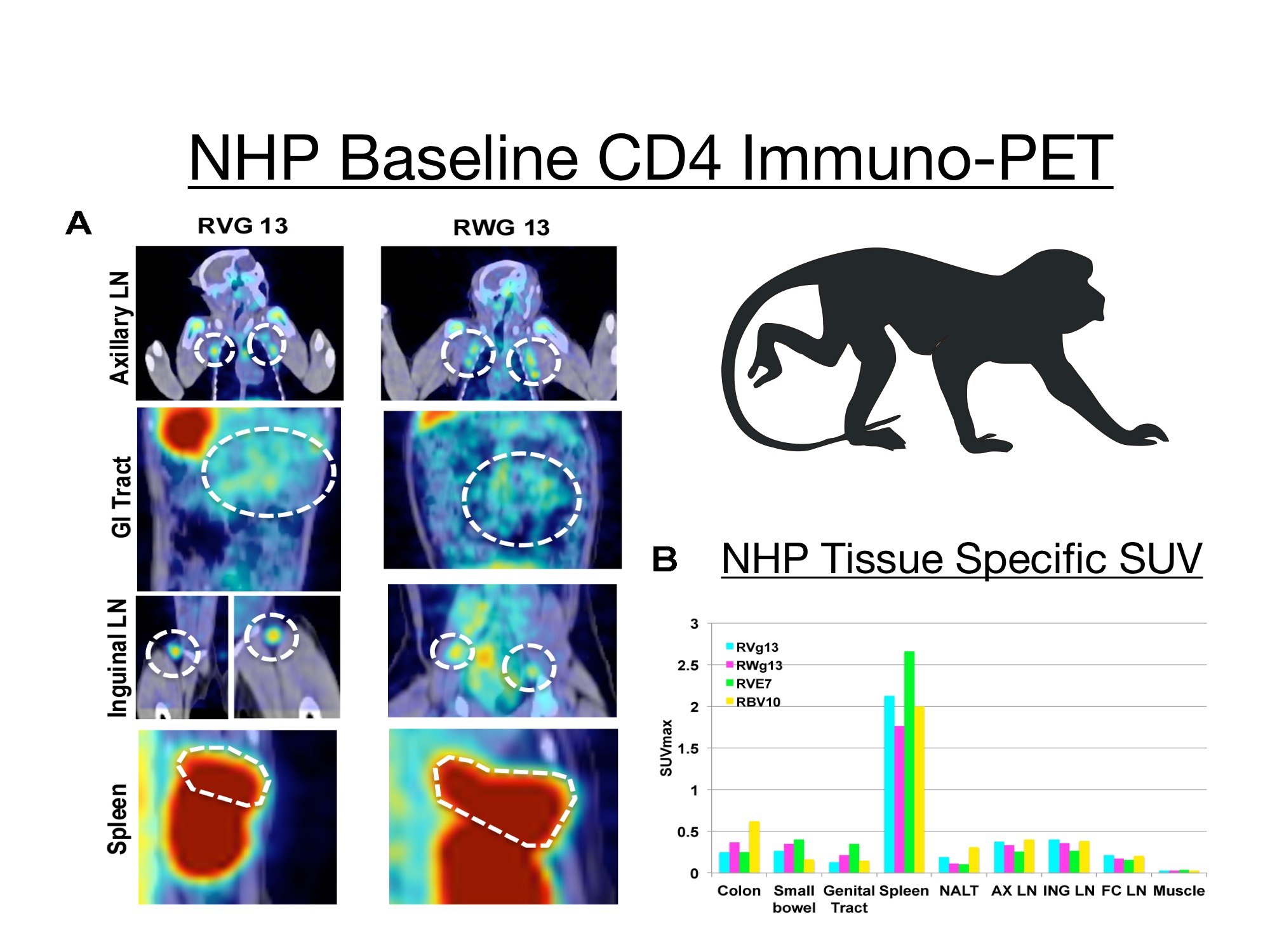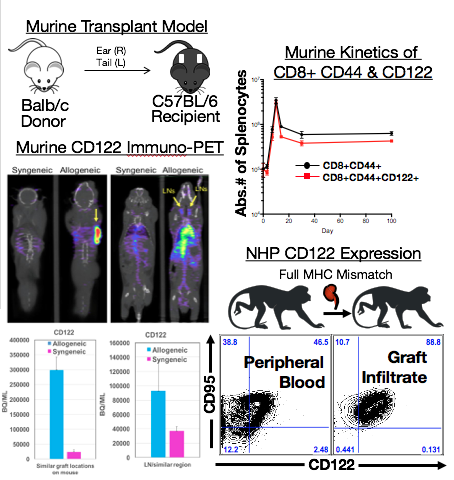Non-Invasive Detection of Rejection with ImmunoPET Imaging.
1Department of Surgery, Emory University, Atlanta, GA
2Department of Biomedical Engineering, Georgia Tech, Atlanta, GA
3JN Biosciences LLC, Mountain View, CA
Meeting: 2017 American Transplant Congress
Abstract number: 189
Keywords: Co-stimulation, Non-invasive diagnosis, Primates, T cell graft infiltration
Session Information
Session Name: Concurrent Session: T Cell Biology and Alloimmunity
Session Type: Concurrent Session
Date: Sunday, April 30, 2017
Session Time: 4:30pm-6:00pm
 Presentation Time: 4:54pm-5:06pm
Presentation Time: 4:54pm-5:06pm
Location: E352
Current approaches to detect and diagnose rejection are retrospective and/or invasive. These methods assess the extent of end organ damage by insensitive and non-specific measures (e.g. Creatinine), or assess graft immune cell infiltrate and organ damage by costly and risky invasive biopsy. The need for early non-invasive detection of alloreactivity prior to organ damage has never been greater. Recently we reported development of a technique to track immune cell subsets during viral infection and T cell depletion in rhesus macaques (Science 2016, Nature Methods 2015). This technique, Immuno-PET (Positron Emission Tomography), allows for whole-body visualization of immune cell subsets with radiolabeled monoclonal antibody or fragments (mAbs) specific for cell surface markers such as CD4. We adapted ImmunoPET for detection of alloreactive T cells. PET is a clinical mainstay for the detection of cancer, using radiolabeled probes to monitor target tissues. We recently described a critical role for CD122 the shared IL2/IL15Rβ, in alloreactivity. CD122 is highly expressed on alloreactive T cells during rejection. T cell infiltrate within the allograft expresses high levels of CD122. We demonstrate the utility of ImmunoPET to sensitively and specifically monitor whole T cell distribution in both mice and non-human primates, and extended this application to detection of alloreactivity using CD122 and CD44 directed probes (Fig 2
We adapted ImmunoPET for detection of alloreactive T cells. PET is a clinical mainstay for the detection of cancer, using radiolabeled probes to monitor target tissues. We recently described a critical role for CD122 the shared IL2/IL15Rβ, in alloreactivity. CD122 is highly expressed on alloreactive T cells during rejection. T cell infiltrate within the allograft expresses high levels of CD122. We demonstrate the utility of ImmunoPET to sensitively and specifically monitor whole T cell distribution in both mice and non-human primates, and extended this application to detection of alloreactivity using CD122 and CD44 directed probes (Fig 2  ). We found significant increase in SUV (Standard Uptake Value) in spleen, draining lymph nodes, and graft of transplanted animals that correlated with absolute numbers of T cells expressing CD122 or CD44, demonstrating ImmunoPET's fidelity and versatility.
). We found significant increase in SUV (Standard Uptake Value) in spleen, draining lymph nodes, and graft of transplanted animals that correlated with absolute numbers of T cells expressing CD122 or CD44, demonstrating ImmunoPET's fidelity and versatility.
CITATION INFORMATION: Mathews D, Lindsay K, Santangelo P, Dong Y, Tso J, Adams A. Non-Invasive Detection of Rejection with ImmunoPET Imaging. Am J Transplant. 2017;17 (suppl 3).
To cite this abstract in AMA style:
Mathews D, Lindsay K, Santangelo P, Dong Y, Tso J, Adams A. Non-Invasive Detection of Rejection with ImmunoPET Imaging. [abstract]. Am J Transplant. 2017; 17 (suppl 3). https://atcmeetingabstracts.com/abstract/non-invasive-detection-of-rejection-with-immunopet-imaging/. Accessed December 31, 2025.« Back to 2017 American Transplant Congress
